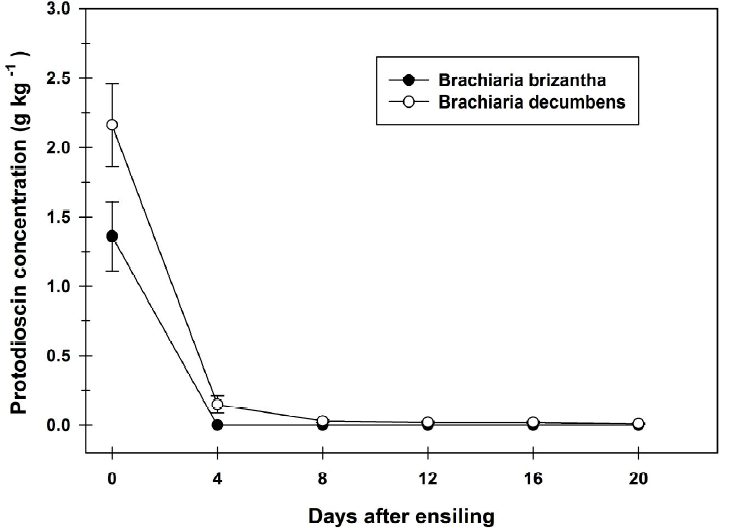Brachiaria (signalgrass) is now the most widely used tropical grass genus in Central and South America. However, Brachiaria spp. can cause hepatogenous photosensitization in livestock. Steroidal saponins, specifically protodioscin, present in Brachiaria spp. may be responsible for liver injury and subsequent photosensitization. The objective of this study was to determine the effect of ensiling Brachiaria decumbens and Brachiaria brizantha or making hay from Brachiaria decumbens on the concentrations of steroidal saponin in these grasses. Brachiaria grass had no detectable levels of the saponin protodioscin after 24 days of ensiling. In addition, in Brachiaria decumbens, the concentration of the protodioscin decreased 48% over the first three days after haymaking and then remained constant. These results suggest that livestock consuming Brachiaria either as silage or hay may have reduced risk of intoxication by protodioscin.
haymaking; hepatogenous photosensitization; saponin; protodioscin; signalgrass; silage.

 Thumbnail
Thumbnail
 Thumbnail
Thumbnail

